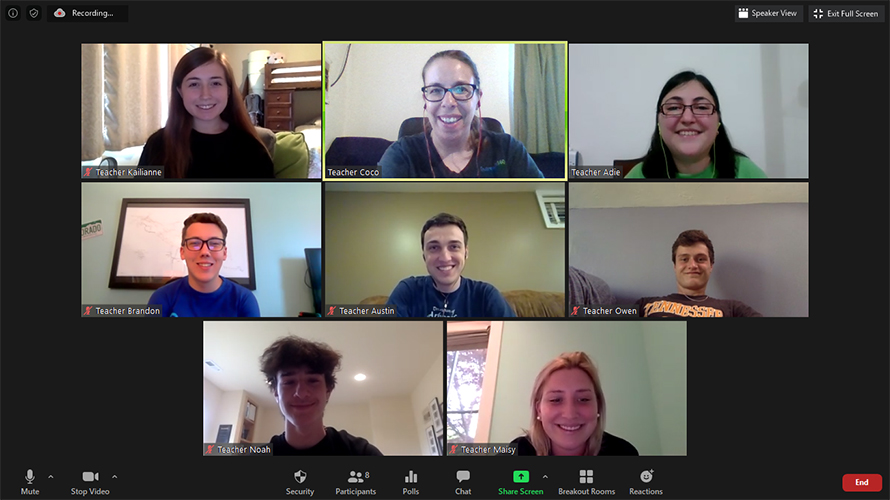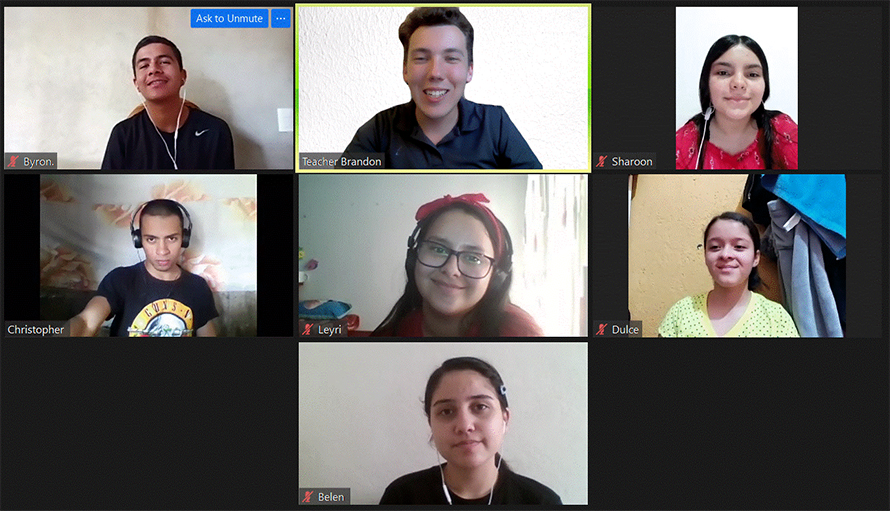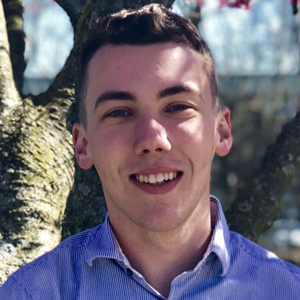Virtual volunteering in the land of lakes and volcanoes
Four days after I was sent home from college due to the COVID-19 outbreak, my graduate school advisor at Cornell University notified me that a hiring freeze would prevent me from starting lab rotations in June. No more than 24 hours later, I received an email from Outreach360, an organization I had volunteered with during my 2019 spring break, teaching English in the Dominican Republic. This time, they invited me to become an instructor for a virtual STEM summer camp; with my summer plans delayed, it felt nothing less than fate.
During our orientation, volunteers participated in training exercises, and we selected foundational materials to start our first classes from a plethora of educational resources in science, technology, engineering and math. But I had some doubts.
Will I be able to teach the students? Will I be able to control the virtual classroom effectively? Will each student be actively engaged and learning?
These questions echoed in my mind, but Outreach360 provided us with the skills to address them. At the end of our first day of teaching (and every day thereafter), the volunteer teachers reflected as a group on our experiences, and this became a highlight of my day. We shared reassurance, advice, highs and lows as we all learned to navigate remote volunteering with Nicaragua. These conversations helped me become the best teacher I could be, and the thoughtfulness of other volunteers encouraged me to approach my lessons with a great attitude.

The leaders of Outreach360 believe in creating opportunities through education. In 2019, I traveled to the organization’s first learning center site in Monte Cristi, Dominican Republic. Over 25 years, the nonprofit has hosted more than 22,000 international volunteer teachers in this community where residents have limited access to educational materials in Spanish and English.
This summer, I taught two online classes each day for four amazing weeks. I had to create lesson plans and curricula as well as participate in Spanish classes, professional development opportunities and virtual excursions. My volunteer experience lasted from May 18 to June 12, and two more four-week programs followed my term. I had the freedom to design classes for middle and high school–aged students, covering topics from atoms to plants to the solar system. This experience put my biochemistry degree to the test.

Using my background in plant virology and electrochemistry, I could talk about some topics with depth and understanding, but when it came to areas outside my expertise I felt less stable. In every class, students asked detailed questions, sometimes going further than what I had imagined for that day’s meeting. Questions like ‘how big is a virus?’ and ‘how can we stop pollution?’ kept the students engaged and learning. My students were using critical thinking skills, something not always encouraged in public schools in Nicaragua. They pushed me forward and kept me interested; it just came naturally.
I had a light-bulb moment when I realized something the students taught me: I could use questions to spark their interest in a topic. Going from atoms to DNA to organisms, we built on the knowledge from each previous class.
During a discussion on pollution and climate change, I asked each student what they could do, personally, to address the problem. As homework, the volunteer teachers often assigned students to talk to their families in English and Spanish about the day’s most thought-provoking topics, so I asked them to talk at home about pollution solutions and come back with ideas to execute in the next week. I was blown away by their answers and how excited they were to learn about their classmates’ ideas for cleaning local parks and streams.
Future opportunities
I was recently appointed as Outreach360’s STEM curriculum director, so I am preparing new and exciting ways to teach English as a second language, critical thinking and science over the Zoom platform. I recommend volunteering with the upcoming Outreach360 Virtual Impact Program, with options for a health and science focus. The teaching internship for the next session requires a two-hour commitment every Saturday from Oct. 10 to Nov. 28. Additional opportunities like this will be scheduled in the near future. Lessons from this 8-week program will compare to what I learned in four weeks. Here are some of my takeaways:
The need to be flexibleI was almost never able to maintain a stable internet connection with all nine students for a whole class period. This required flexibility, something I’d never needed sitting in large college lecture halls. The students were eager to reconnect or get the homework assignment from a teacher or classmate; truly passionate learners are part of this program. However, I also used TikTok, virtual experiments and interactive slideshows to keep the learning fun and engaging.
Our knowledge can have an impactNo matter my age or experience, I can make a difference. As a scientist, I surround myself with educated people and focus on my research interests, but I found that looking beyond this narrow focus, at the impact I can have sharing my passion of science, has untapped potential. I can still picture the faces of my students on Zoom. I never thought that hands raised in front of a computer screen would be among my highlights of summer 2020, but they were.
We can do service anywhereOnline opportunities have evolved rapidly for both employment and community service. My virtual volunteering provided educational opportunities for the students of Jinotega, Nicaragua. We sometimes view service as a selfless act, but I received more than I gave. My students taught me how to have a fun class over Zoom even though they were many miles away. I never felt more connected to others, and I’m grateful for all the memories and bonds made during my internship.
I hope that by sharing my experience, I can help you see the benefits of service. In an educational setting, we can inspire the next generation to become something they never imagined. All a child needs is that spark — the same spark that lit our interest in science.
Enjoy reading ASBMB Today?
Become a member to receive the print edition four times a year and the digital edition monthly.
Learn moreGet the latest from ASBMB Today
Enter your email address, and we’ll send you a weekly email with recent articles, interviews and more.
Latest in Opinions
Opinions highlights or most popular articles

Debugging my code and teaching with ChatGPT
AI tools like ChatGPT have changed the way an assistant professor teaches and does research. But, he asserts that real growth still comes from struggle, and educators must help students use AI wisely — as scaffolds, not shortcuts.

AI in the lab: The power of smarter questions
An assistant professor discusses AI's evolution from a buzzword to a trusted research partner. It helps streamline reviews, troubleshoot code, save time and spark ideas, but its success relies on combining AI with expertise and critical thinking.

How AlphaFold transformed my classroom into a research lab
A high school science teacher reflects on how AI-integrated technologies help her students ponder realistic research questions with hands-on learning.

Writing with AI turns chaos into clarity
Associate professor shares how generative AI, used as a creative whiteboard, helps scientists refine ideas, structure complexity and sharpen clarity — transforming the messy process of discovery into compelling science writing.

Teaching AI to listen
A computational medicine graduate student reflects on building natural language processing tools that extract meaning from messy clinical notes — transforming how we identify genetic risk while redefining what it means to listen in science.

What’s in a diagnosis?
When Jessica Foglio’s son Ben was first diagnosed with cerebral palsy, the label didn’t feel right. Whole exome sequencing revealed a rare disorder called Salla disease. Now Jessica is building community and driving research for answers.

